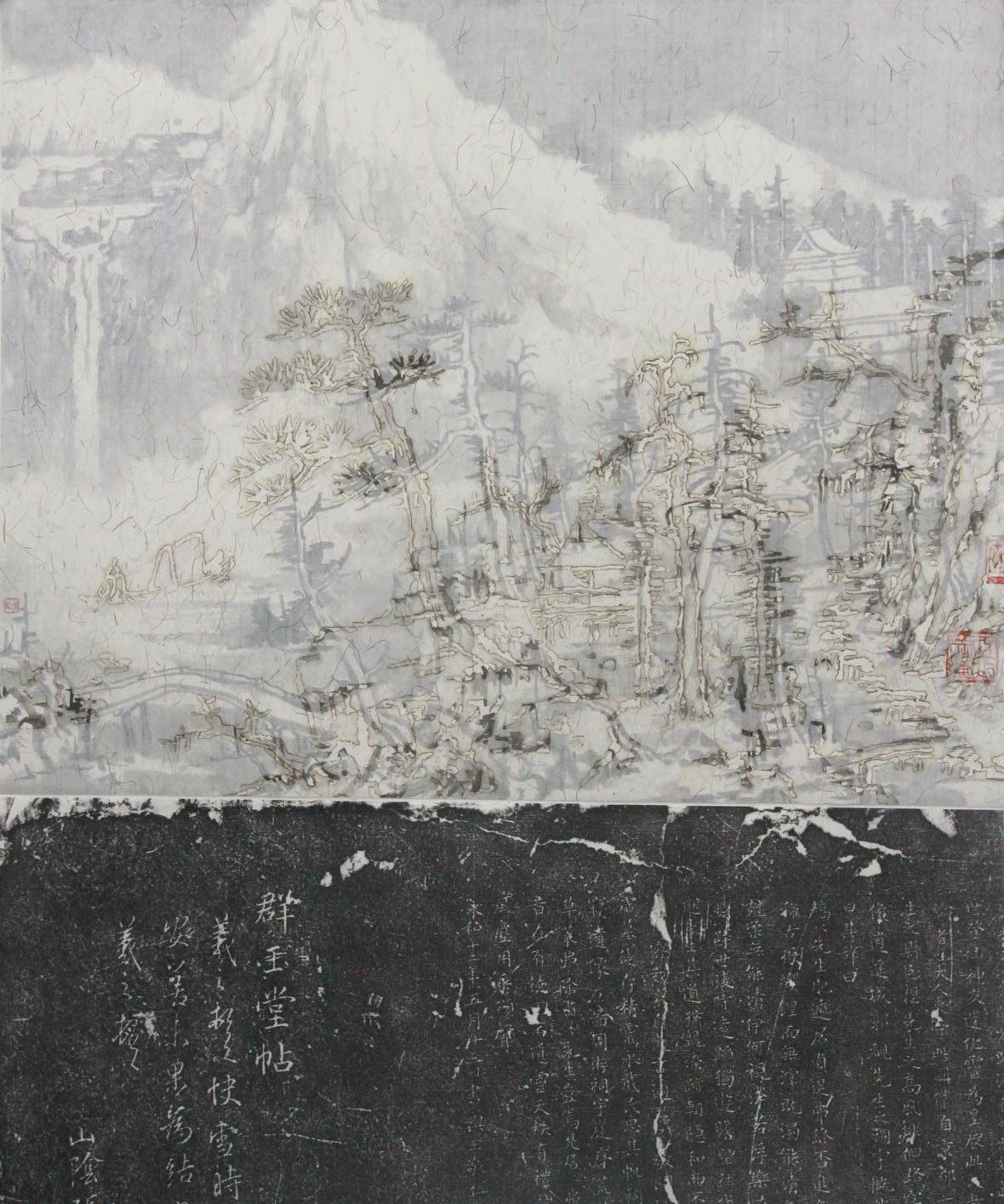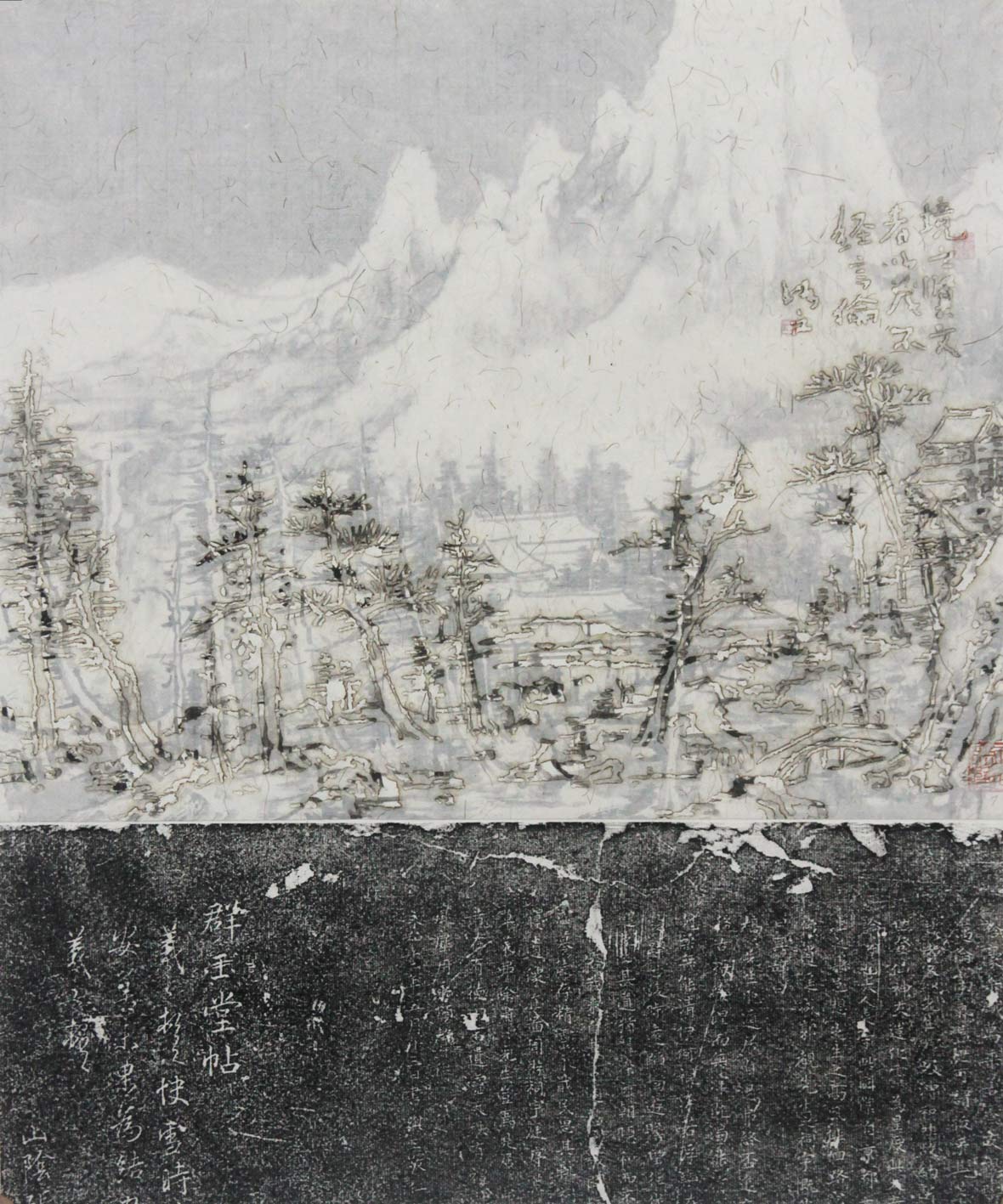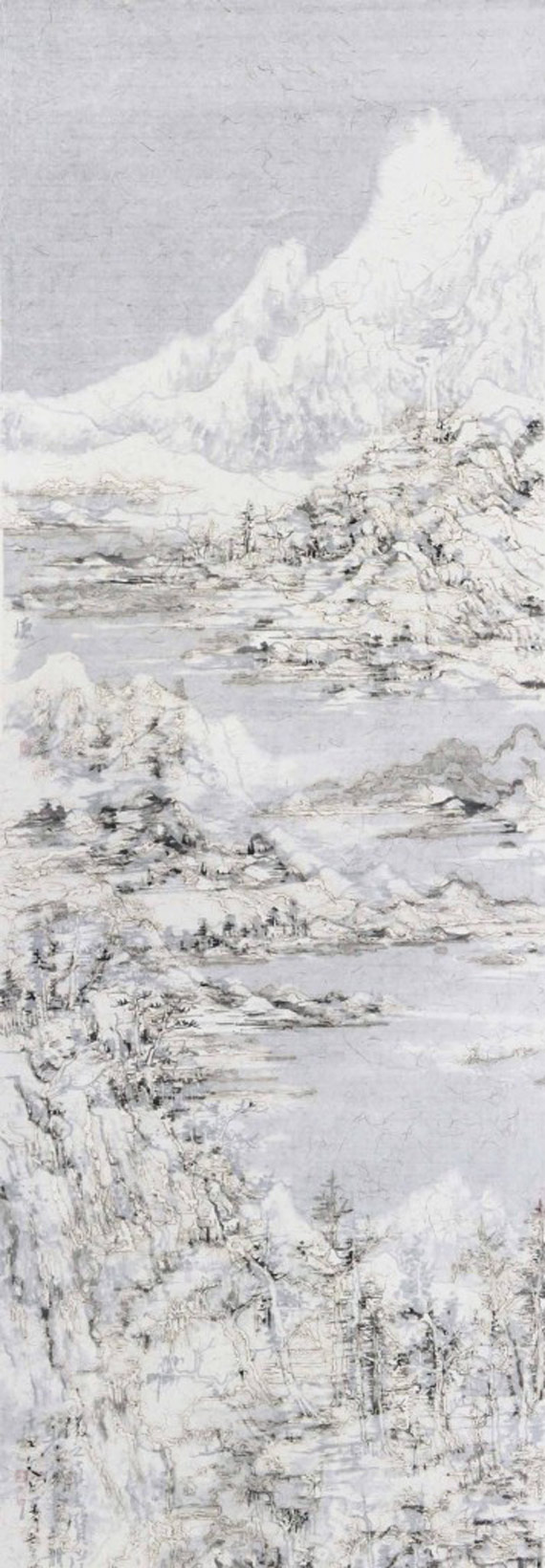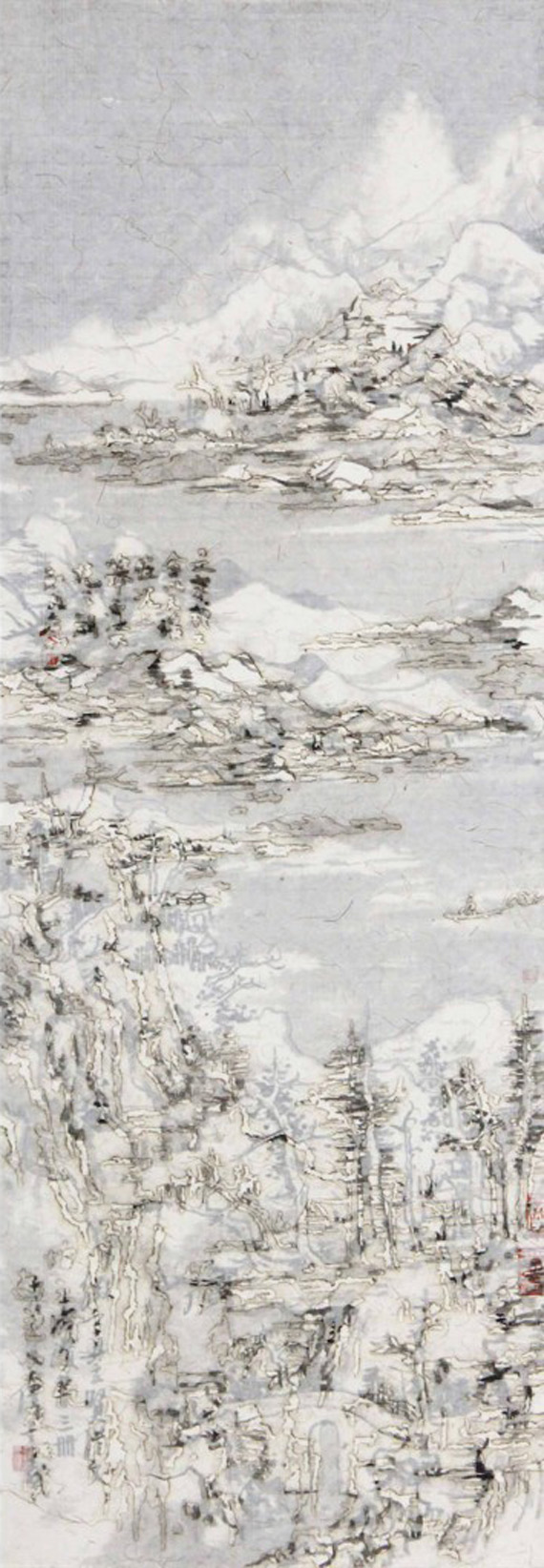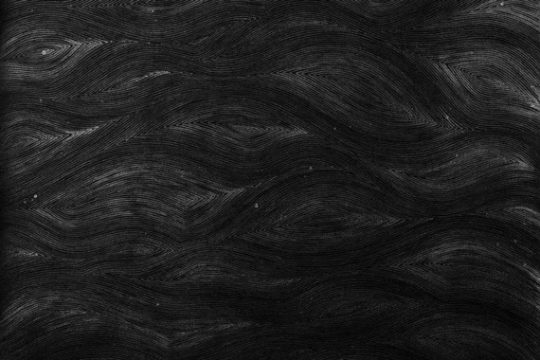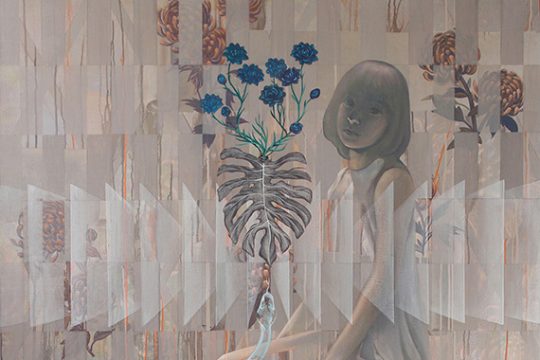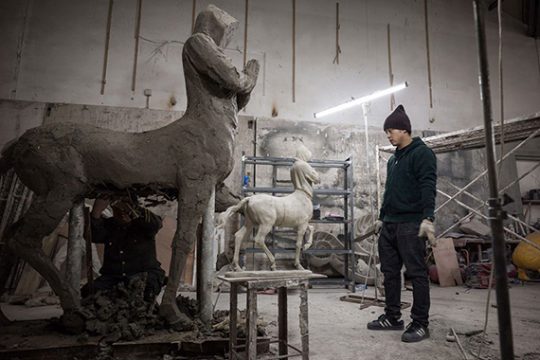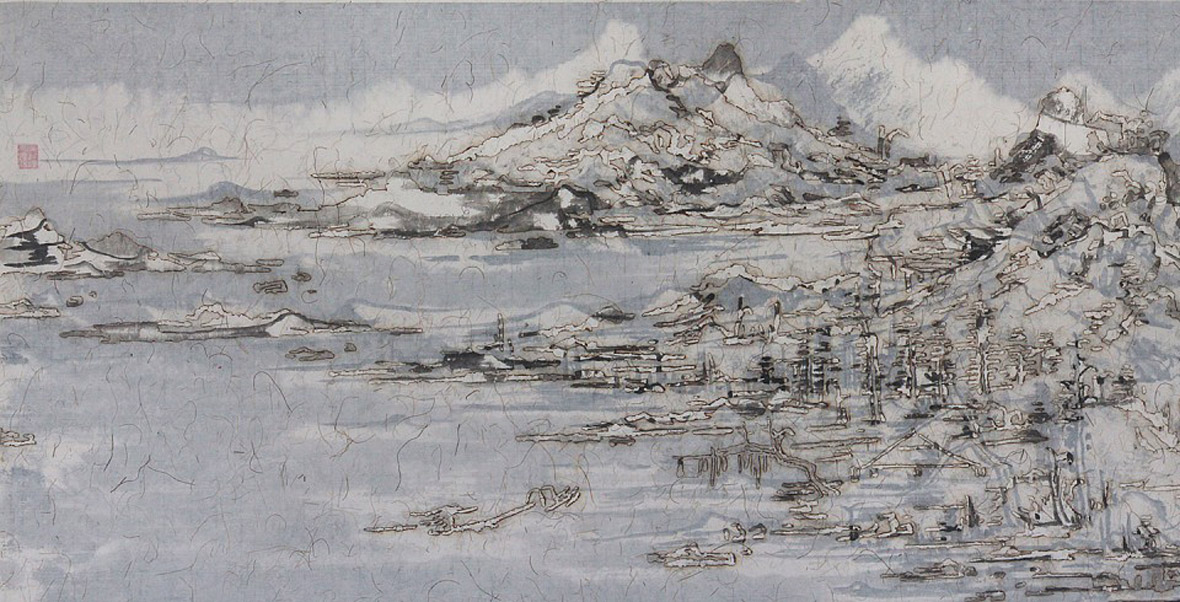
Contemporary Chinese artist Wang Tiande’s paintings engage with the cultural history of ink and its influence on the development of Chinese painting and personal expression. His work is deep and brooding, often rooted in classical landscapes and calligraphy but executed in a way that breathes new life and meaning into the traditional art form. His upcoming exhibition Literati Gathering will be showcased at San Francisco Bay’s Asia Art Week. It presents the artist’s “Houshan” series of layered, deconstructed compositional elements, created in his unique style as a response to the paintings and calligraphy of classical Chinese masters. Wang hopes to inspire discussion about the past, the present, and the ability to respect the timelessness of traditional art forms.
中国当代艺术家王天德的作品结合中国传统水墨画的文化历史,以及其对中国艺术发展和艺术家的表现形式所产生的影响力。其作品主旨深刻,充满哲思,常常以古代山水和书法为创作根基,同时也为传统艺术注入新的生机和寓意。他的展览Literati Gathering即将在旧金山湾区亚洲艺术周亮相。此次展示的是这位艺术家名为“后山”的系列画作,这组作品在对中国传统水墨和书法大家致敬的同时,以层次分明、解构组合元素的方式开创出独树一帜的艺术风格。王天德希望引发人们对传统和当代的探讨与思考,重拾对传统艺术里永恒魅力的尊重。
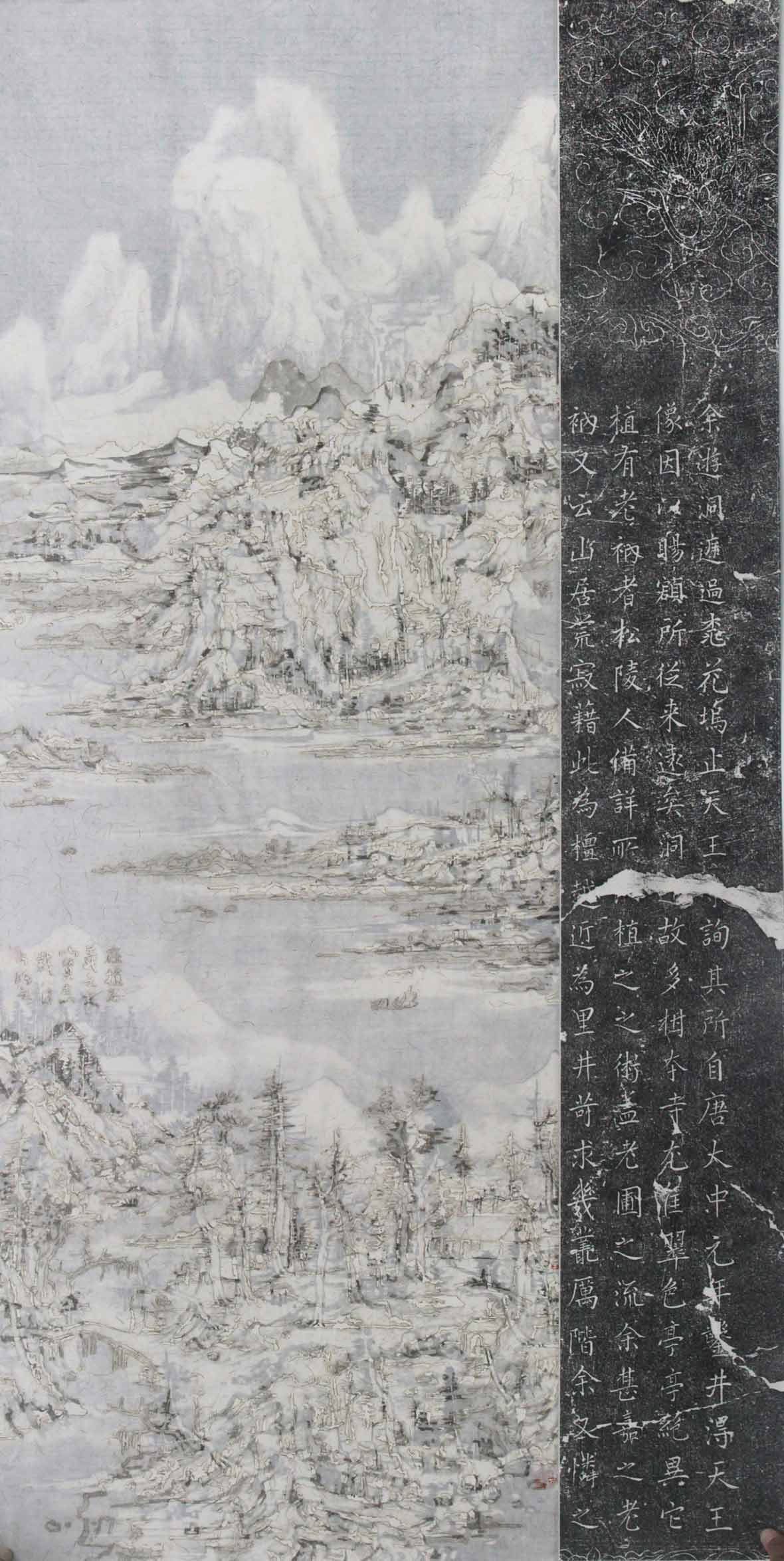
Born and raised in Shanghai, Wang Tiande graduated from the Chinese Paintings Department of Zhejiang Academy of Fine Arts before obtaining his doctorate degree from their Calligraphy department. Taking inspiration from the paintings and calligraphy of traditional Chinese masters such as Wu Hufan (1894 – 1968), Literati Gathering is a poignant choice of title for the series; the word Literati alludes to the class of Chinese scholar-painters who developed their style in the Song, Yuan, and Ming dynasties, and were generally more interested in personal erudition and expression over literal representation in their artistic style. Wang Tiande takes particular inspiration from Wu Hufan’s artistic attitude, for he stayed true to traditional Chinese art forms while embracing modernity.
土生土长于上海的王天德毕业于浙江美学学院中国画系,之后在书法系取得了博士学位。为展览取名为Literati Gatherin是受到如吴湖帆(1894 – 1968)等中国传统绘画和书法大师们的启发,此名也寓意深刻。 “文士”暗指的就是中国宋、元、明朝的人文画家一族,他们学识渊博,艺术造诣上极具个人风格。由于吴湖帆在融入现代元素的同时保持了中国传统艺术之精髓,王天德尤其受他艺术观的影响。
The work in Wang’s “Houshan” series is comprised of two layers, one negative and one positive. Each piece is supported by an under layer of rice paper, on which landscapes and inscriptions are rendered in traditional Yuan and Ming dynasty compositions and brushwork. Wang’s use of plain ink strokes and minimal color represents a common Literati lack of concern for ostentation, and an emphasis on personal, ethical expression. The upper surface of the paper is burned through with incense sticks instead of traditional brushwork in order to create another landscape through negative space. This separates the series from its traditional connotations and places it into a unique contemporary context.
王天德的“后山”系列画作构建于一正一负的两个层面,每一张作品都以宣纸为底,山水和题字都呈现出元明两朝的传统绘画和书写风格。淡墨和简色的运用,凸显“文士”不喜粉饰的共通点,同时也强调了个性化和精神伦理层面的表现形式。画纸上方用香烛以火灼取代传统毛笔,构建出灼空后的另一个空间的山水层面。这套从传统内涵中衍生而来的系列作品置入了与众不同的当代语境中。
By double layering each piece, Wang successfully adds texture, depth and complexity to the “Houshan” series of seemingly simplistic tones and landscapes. Although the layers overlap, they are intentionally mismatched in order to spark discussion about reconciling one’s past with the present. The lower layers are only partially visible through the upper layer of the painting. “For some things, full display is unnecessary. The value system of traditional landscape painting is obvious. We need not deny it. It exists,” Wang explains. “But our lifestyle and artistic discourse must be contemporary. These two layers, put together, will produce a new aesthetic experience.”
通过这种双层面作品,王天德在看似色调简单的山水画“后山”系列中,融合了质感、深度和复杂性。虽然不同的层面有所重叠,但却特意错位搭配,就是为了能唤起人们对传统和现代的思考和讨论。每张作品下面的一层在上层的覆盖下,只有部分可显现,王天德解释到,“对于某些东西,全部显示出来没有必要。传统山水画的价值体系无需赘言,我们也无需否认,它就真实地存在于此。但是我们的生活方式和艺术表现必须与时俱进。两个层面交织在一起,将会产生一种全新的审美体验。”
Wang also creates an illusion of spatial depth by layering his pieces. He describes the creation of the virtual “third space” between the layers as an opportunity for debate, where contemporary people can appreciate and engage with ancient art as well as modern art. By working with negative space, he succeeds in generating apparent depth and space in his pieces and presents how complexity can come from simplicity. The simple layering of sheets of rice paper masterfully fuses two diametrically and chronologically opposed techniques, in a result that is both seamless and refreshing.
王天德以层次分明的作品创造出一种空间深度有致的幻境。他把这个夹层间虚拟“第三空间”的创作称为一种探讨机会,借此让当代人在欣赏或进行现代艺术创作的时候,多回望一下传统文化。繁自简出。以一种与“正”相对的“负”层创作,他在其画作中成功构建了一种可视的深度和空间。层层的宣纸通过精巧的排列,融合了两种截然不同,甚至是跨时代的艺术技巧,最终呈现无缝连接的艺术效果,让人眼前为之一亮。

